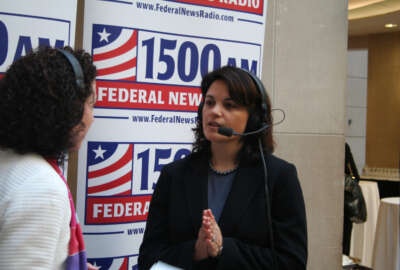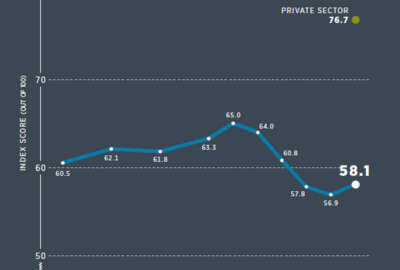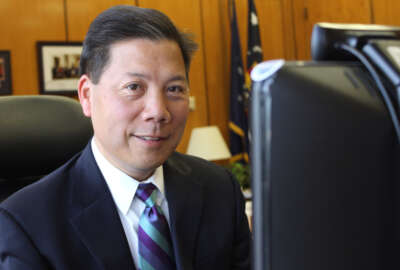 Exclusive
Exclusive OPM: 5 drivers of better employee engagement
The Office of Personnel Management analyzed data from the Federal Employee Viewpoint Survey and found specific ways for agencies to improve employee satisfaction.
As the Office of Personnel Management drills down into the Federal Employee Viewpoint survey, five trends to improve employee engagement are emerging.
OPM acting Director Beth Cobert said Dec. 9 in a new blog post that agencies that are seeing their overall scores increase year-over-year and those that have seen their Best Places to Work survey rankings inch up focus on specific drivers:
- Meaningful performance feedback conversations
- Management styles that foster communication and collaboration
- Adherence to merit system principles
- Employee training and development
- Work/life balance
“We know that employee engagement is a leading indicator of excellent performance,” Cobert wrote. “To help leaders most effectively use the FEVS data to enhance engagement, OPM created an interactive tool we call UnlockTalent.gov. We are continually refining and updating that dashboard, and for the first time this year, the public was given access to this valuable information.”
The new data about what improves employee engagement comes as the Partnership for Public Service released its 10th annual Best Places to Work rankings. Overall, federal employee satisfaction and commitment scored 58.1 out of 100 points in 2015, a 1.2-point increase from 2014.
Certain agencies, such as the departments of Labor and Housing and Urban Development, have seen significant increases by following the some of the specific steps laid out by Cobert.
“We believe one of the key elements in helping to make that improvement is agencies’ ability to see this data, access it and use it,” Cobert said at the Partnership event on Dec. 8 in Washington. “This year our team at OPM produced 26,000 agency and office-level reports, up from the 21,000 we produced last year, and vastly more than what had been done to start with. And, we actually got them to the agencies a month ahead of schedule. We believe that getting this micro-level data out to folks is critical to enable leaders to improve their performance because then they know what their particular unit and folks there are thinking.”
Cobert said in the blog post that OPM will continue to “drill down” into the survey data to come up with other key factors that could improve employee satisfaction and engagement.
“OPM has also created an index we call the New Inclusion Quotient — or New IQ. This initiative is designed to help employees and managers foster diversity and inclusion in the workplace,” Cobert wrote. “So far more than 15,000 federal employees have taken our training on how to create and sustain a diverse and inclusive workforce.”
According to Cobert, the way to create more best places to work: Get data to the local managers for their use.
“We also would encourage folks to look at this, understand it and pick a few things to work on,” said Cobert during the event. “You don’t need to fix everything. We can’t all address everything at once. But pick a few things, stick with it. When employees see that you’re using the data, that is how they know that everyone is committed to their improvement.”
Rep. Meadows’ observation, apology
The House Oversight and Government Reform Committee is planning a hearing on the rankings. Rep. Mark Meadows (R-N.C.) said at the Partnership event that he’s changing the name of the hearing from “worst places to work” to “best places to work” in government.
“I think we are heading in the right direction. It’s never a good thing to say ‘I think we’ve hit bottom.’ When I heard that I said, ‘that was probably a great year last year,” Meadows said with a smile. “When we start to see we are making progress, it’s important that we emphasize that progress. So the observation I have is that not only will members of Congress in a bipartisan way going to make sure we put an emphasis on that, it’s important that we make sure compensation and awards for a job well done is there as well. Now that’s coming from a fiscal conservative that is saying that.”
Meadows promised to go to authorizing and appropriations committees to promote agency successes.
He said the challenge for Congress and executives is to recognize more than just those in the hierarchy of management, but also those people who do the jobs that many times get overlooked.
“I close with a heartfelt thank you on behalf of members of Congress and all of those who never tell you in the way that they should that they appreciate the federal workforce,” Meadows said. “I close also with an apology for the times when you have been used as the person who is to be blamed for the inefficiencies or the way we should be doing business — but we are not — so my apologies to you.”
Copyright © 2025 Federal News Network. All rights reserved. This website is not intended for users located within the European Economic Area.
Jason Miller is executive editor of Federal News Network and directs news coverage on the people, policy and programs of the federal government.
Follow @jmillerWFED





